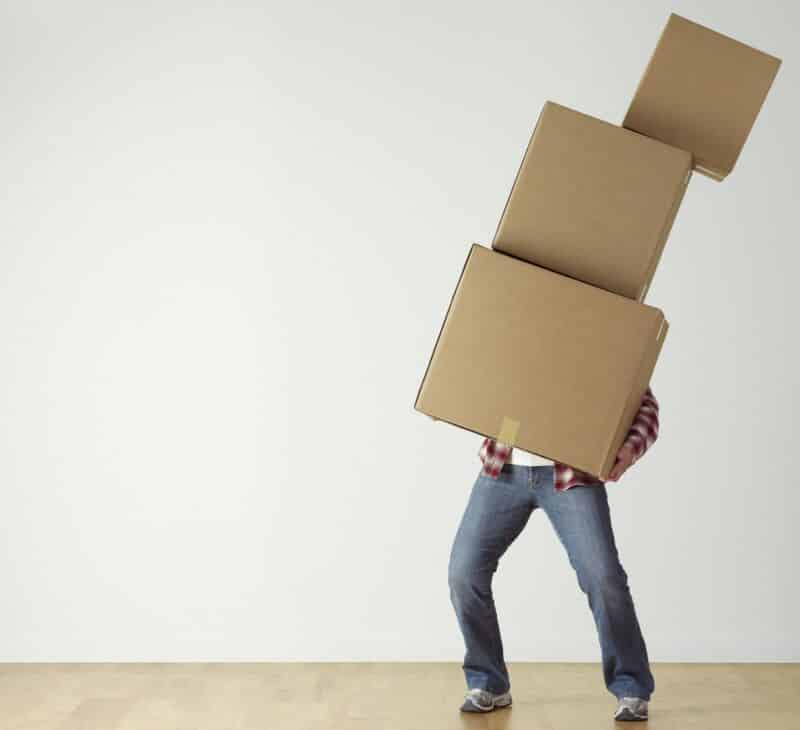
If you are not careful about the packing materials you use, your move to a new home can be unkind to the environment. Many people buy new cardboard or plastic boxes and other packing materials and then toss them after their move.
Thankfully, there are simple ways to make the moving process more earth-friendly. Based on decades of experience, the folks at Oz Moving, a New York area moving company, suggest these greener ways to move that can maybe help you save some money as well.
Remember the Three Rs for a Greener Move
One way to have a greener move is to remember the three R’s. Reduce, Reuse, and Recycle.
Reduce
First, reduce what you take with you when you move. Sell, donate or give away what you don’t really need anymore. For some types of moves, for example where you are charged by weight or truck size, not moving what you really don’t need can save you money with the move.
Also, reduce the amount of new packing materials you use.
Reuse
Second, it may take a little more effort, but you should reuse boxes instead of buying new ones. There are companies that sell used shipping boxes, including some moving companies. You can also save and reuse boxes you get from packages shipped to you like from online retailers like Amazon. You may have friends and family who just moved and would be happy to let you have their used boxes. You can also find used boxes at online sites like your local chapter of www.FreeCycle.org.
You can reuse packing materials like bubble wrap, shipping peanuts, etc. if you simply save what you get when packages are shipped to you.
The packing paper most movers sell is nothing more than blank newsprint. You can save and reuse newspapers you get for cushioning when you pack. Ask your friends to save their newspapers for you. Reusing their newspapers is easier on the environment than recycling them after one use.
Use the old newspapers as you would new packing paper with one exception. Avoid using newspapers for packing items that could be stained by the newspaper’s ink. If you simply wrap your things with moving paper first, you can then use crumpled up newspaper for cushioning and avoid the newspaper from being in direct contact with your things.
Tip 1: To avoid damage during your move don’t reuse boxes that have been crushed, gotten wet or are already coming apart at the seams. Don’t overload boxes you reuse. Make sure the box you use is strong enough for the weight and fragility of what you are packing in them.
TIP 2: To save space when saving boxes, cut the tape on the box so you can collapse the boxes and store them before your move. You can then tape them again when you pack. You can (also / even) store the packing materials you save in some of the boxes.
If you must buy new packing materials, buy shipping boxes and other shipping items made from recycled materials. Then, after you finish moving, the best thing you can do with the cardboard boxes you used that are still in good condition is to give them to someone who moving so they can reuse your boxes.
Again, Freecycle, other sharing sites, or selling sites like Letgo.com can help you find eager takers. When you find someone interested in using your shipping materials, ask them to commit to finding others to reuse the materials you gave them.
Recycle
As mentioned in Tip 1, shipping boxes and other packing materials can only be reused so many times. At some point, they will no longer be strong enough to protect the things being moved. When you can no longer reuse the boxes and packing paper you have, make sure you properly recycle them. And, ask those you give your reusable materials to, to commit to properly recycling what can no longer be used.
Consider Renting Reusable and Recyclable Containers
Another option is to rent reusable and recyclable plastic moving bins. You can rent ones specifically made for moving. For some types of items, reusable plastic bins can be easier to pack than cardboard boxes. These reusable bins are made to be used and reused many more times than cardboard containers can be reused. Make sure you rent bins that are both reusable and are recyclable. Before you rent bins, make sure it is the practice of the company you rent from to properly recycle bins no longer usable.
Some moving companies, like Oz, offer their customers reusable bins for moving. These types of bins can also be rented from U-Haul as well as from other companies across the USA. If you are making a long distance move, make sure that you can return the rented reusable bins easily and in the area you are moving to. Returning bins that need to be shipped back across the country will lessen the green benefit the bins offer.
Note: Not all plastic boxes are used for storing things at home, like the ones normally sold in home stores, are strong enough to be stacked high when loaded. If you use plastic containers make sure they are made for moving and not just storage.
More Tips for Following the Three R’s
Preparing for a move can be stressful, especially if you have accumulated a lot of things and if you have a hard time parting with things. Here are some ways to make it easier for you to decide what to take and what to leave and to make you feel better about not taking everything with you.
First, remember, the fewer things you take with you when you move, the fewer packing materials you’ll need, and you’ll likely pay less for the move itself as moving companies charge based, in part, on how much you take.
So, start by sorting your things into two categories.
- Things you definitely need or want to take with you
- Everything else
From the “everything else” category, determine the best way to reuse or recycle as much as possible. What can be reused can be donated to charity, given away or sold. From what is left, sperate out what can be recycled. Then, what is left will be the things that you will need toss and will end up in a landfill. You may be surprised how much of what you aren’t taking can be reused or recycled.
Donating to Charity
You can give away or donate things many ways. Goodwill and other charities take donations. Some, like the Salvation Army, usually offer pickup for larger or harder to transport items like furniture. Some charities will pick up smaller items. Many other charities you can simply drop off what you are donating. You may be surprised what items are most useful to local charities; for example, Goodnet claims that warm pairs of socks are the most sought after items in homeless shelters. If you itemize your tax deductions, be sure and get a donation receipt.
Giving Away
There are free online resources like Freecycle that are good for giving away things you don’t need to people who want them.
Selling
There are also online venues like Letgo that you can sell or give away things you don’t need to take on your
Or Find an All in One Junk Removal Firm
If you don’t want to, or don’t have the time to donate, give away, sell or recycle yourself, there are junk removal companies that will do this for you. They take what you don’t want to move with and will 1) donate what can be donated, 2) what can’t be donated but is recyclable they will recycle and 3) will only take to the landfill what can’t be donated or recycled. One company that does this is in the Washington, DC area is 123Junk, but there are other companies around the country that do this.
Bonus Tips for a Greener Move
Packing Sleeves
Some packing supply retailers offer packing sleeves that offer extra protection. Expensive china and glasses benefit from these types of packing sleeves. These sleeves are not usually recyclable. But you can reuse them to store your fragile items in your home or give them to others for moving. Everyday dishes and glasses can usually ship safely when packed carefully using recycled newspaper and recycled bubble wrap and other recycled packing materials.
Sealing Boxes Properly Without Wasting Tape
Most packing tape today is made of plastic that is not recyclable. Boxes can be sealed securely with less tape than you may imagine. Ask your mover how to seal your boxes so they will be strong enough for the move and use the least amount of tape. The right amount of tape in the right places will make for a stronger container than taping the box with more tape than is needed but taping in the wrong places.
Keep the above in mind and you can have a greener move.
Guest Author: TJ Peterson, Digital Media Manager at Oz Moving & Storage












